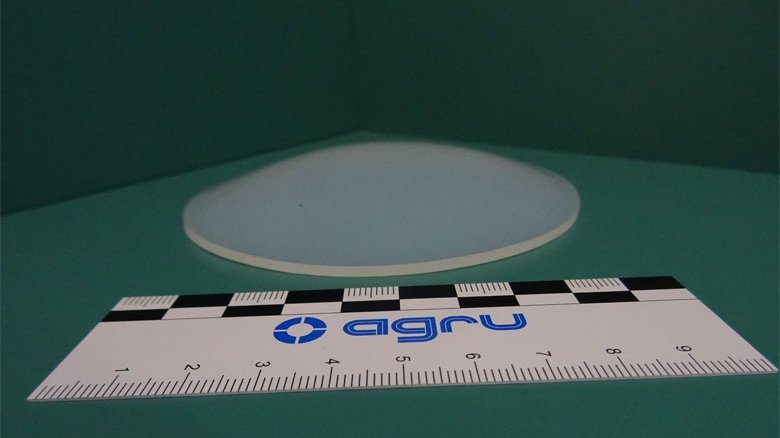Austria's largest industrial company refines fuel products and petrochemicals at its Schwechat site. In the process, crude oil and natural gas are processed into high-quality fuels, oils and special products using appropriate plant components. Residual products are thermally utilized in a combined heat and power plant. A downstream flue gas cleaning system (SNOx) cleans the flue gases and thus makes it possible to use high-sulphur fuels in the combined heat and power plant.
Sulphuric acid is in demand worldwide
Due to the high sulphur content in fuels, SO2 is formed during combustion and is used for the production of concentrated sulphuric acid. Since sulphuric acid is the most widely used acid in the world, there is global interest in this product. In the flue gas cleaning system, the combustion gas is first cleaned of dust by electrostatic precipitators and then the NOx produced is removed in a catalytic process. The SO2 gas present is oxidized to SO3 and reacts with the humidity present to form a highly aggressive sulphuric acid vapour. This is fed into the heart of the sulphuric acid production "the condenser / heat exchanger", where the gaseous sulphuric acid condenses to liquid sulphuric acid with a concentration of at least 94 %.
In order to be able to create sufficient resistance to the highly aggressive application conditions, a multi-layer structure is often resorted to, which is composed of the following materials: chemical stone lining, foam glass layer, non-welded PTFE plates, chemical protection layer and a carbon steel trough.
Old lining was already leaking
This lining variant was also used at OMV, although due to the significant increase in maintenance work and the associated operational shutdowns and repair costs incurred, the profitability of the SNOx plant dropped significantly over time. In the course of the repair work, it became apparent that the multilayer design did not produce a long-term tight lining system. The sulphuric acid had already corroded the carbon steel pan. As a result, it was necessary to remove the lining system, which was already soaked with acid, at great safety expense and, in a further step, to rehabilitate the steel structure as well as the lining. Due to the existing operational shutdowns and the increasing repair costs, OMV decided to fundamentally redesign the condenser area. The new solution was to increase operational reliability, extend maintenance intervals and significantly reduce maintenance costs.
The main focus of the development was to select a lining system that would withstand the harsh operating conditions and meet the specified project objectives. In the course of the selection process, different lining systems were evaluated and analysed. Thanks to its experience in the field of PFA linings for sulphuric acid condensers, INWA AG was already able to draw on long-term references that impressively demonstrate the functionality of this lining system.
AGRU PFA lining tested for one year under extreme conditions
In addition, AGRU commissioned a Swedish testing institute to conduct a long-term test. AGRU PFA natur sheets were tested for one year under the prevailing operating conditions (260 °C, 98 % sulphuric acid). Despite the aggressive conditions, there was no significant change in the product properties after one year. Based on the available long-term references and the investigation carried out, the PFA fixed-point lining variant was specified as the optimum lining system, which is why INWA AG was commissioned in 2018 to convert the first of four plant sections. The PFA fixed-point lining offers simple repair options, as the film can be tightly welded again after proper preparation in the event of damage. This eliminates the need for costly special repair work with different materials in the future.
PFA fixed point lining
In the PFA fixed point lining system, a PFA natural plate is fixed to a steel background by a mechanical fastening method such as bolts or screws. This system is mainly used in flue gas applications and desulfurization plants up to 260 °C. In order to be able to seal the multilayer PFA structure, a thermoformed-covering cap was developed in cooperation between INWA AG and AGRU, which has been successfully used in all expansion stages.
As a system supplier, AGRU was able to manufacture all the required PFA products and thus made an important contribution to the realization of this project. In total, as of 2021, three condensers or heat exchangers have been successfully rebuilt since 2018, using 1,700 m² of PFA sheets in 2.3 mm and 1, 5 mm thickness. The last phase of this project has been in planning for some time and will take place in the summer of 2022. Since the PFA products installed are highly stressed plant components, the PFA production was inspected and controlled by INWA AG and OMV through regular audits.
Conclusion - AGRU solution looks like new after three years of full operation
In the course of a routine inspection of the plant area, which was renewed in 2018, no damage or abnormalities were found on the PFA lining. As the person responsible for the project and Senior Reliability Engineer at OMV, Mr. DI (FH) Ronald Hoffer summed up after inspecting the plant: "Despite the highly aggressive application conditions, the PFA lining shows no significant damage or changes after an operating period of three years. It seems as if the foil had just been installed".

![PFA laying and welding work in the steel tank area [Source: OMV]. PFA laying and welding work in the steel tank area [Source: OMV].](/fileadmin/_processed_/b/5/csm_RS21509_Abbildung-2_23b12b26e3.jpg)

